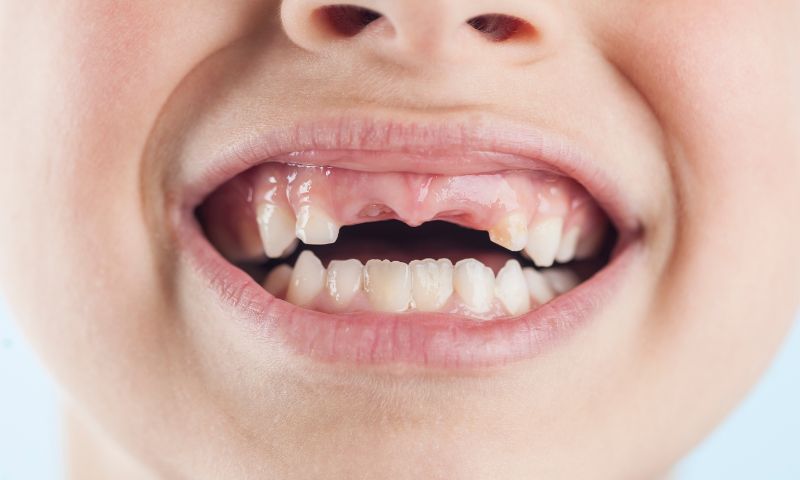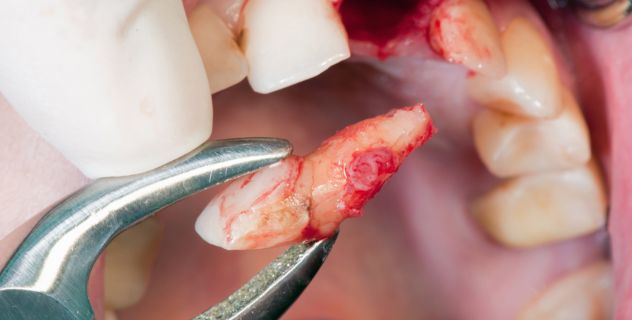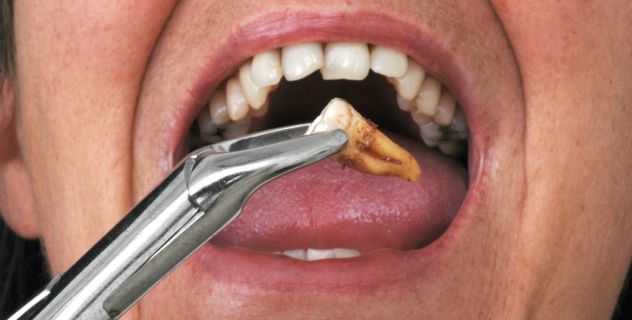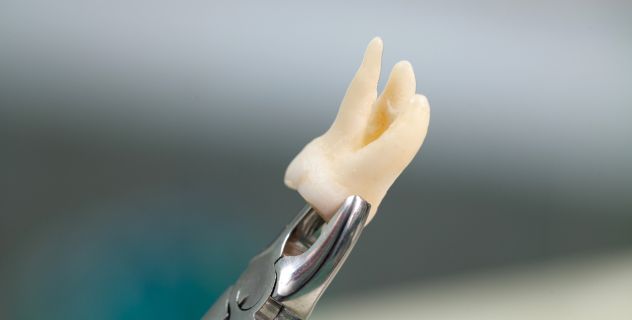Dental Extractions



Tooth extraction is a common procedure performed when a tooth is severely damaged or diseased. Although it can cause concern, it is a necessary option to prevent infections and other oral problems, thus promoting overall oral health.
Indications for tooth extraction:

Tooth extraction is a procedure performed when a tooth cannot be saved or when it poses a risk to overall oral health. There are several indications for tooth extraction, and the dentist typically evaluates each case to determine the best course of action for the patient. Below are some of the main reasons why tooth extraction may be necessary.
Severe Cavities: When a tooth is severely affected by decay, and the damage is so extensive that it cannot be restored with fillings or crowns, extraction is a necessary option to prevent the spread of infection to other teeth.
Periodontal Disease: Infections and diseases of the gums, such as periodontitis, can affect the tissue that supports the teeth. If the infection is severe and the teeth become loose, extraction may be required to prevent the loss of other teeth and the spread of infection.
Impacted Teeth or Wisdom Teeth: Wisdom teeth, especially when they do not have enough space to erupt properly, can cause pain, infection, or displacement of adjacent teeth. In such cases, extracting the wisdom teeth is common to avoid more serious issues.
Fractured or Irreparably Damaged Teeth: If a tooth fractures in a way that it cannot be repaired through root canal treatment or restorations, extraction may be the only viable option.
Space for Orthodontics: In some cases, dentists recommend extracting a tooth to create space for orthodontic treatment, particularly if the teeth are crowded and hinder proper alignment.
In summary, tooth extraction is performed when a tooth is compromised by cavities, infections, fractures, or misalignment. It is important for a dentist to carefully assess the situation before making the decision, as preserving the teeth is always the priority.
Tooth extraction process:

The tooth extraction process is a common procedure performed by dentists when a tooth cannot be saved due to severe cavities, infections, gum disease, or fractures. While it may cause some anxiety, it is a safe and well-controlled procedure that follows a series of well-defined steps to ensure the patient’s comfort and the success of the treatment.
Initial Evaluation: Before the extraction, the dentist conducts a thorough evaluation of the mouth and the affected tooth. This includes taking an X-ray to determine the position of the tooth and the health of the surrounding bones. Depending on the complexity of the case, a physical examination may be conducted to assess other factors related to the patient’s overall health.
Anesthesia: To ensure the patient feels no pain during the procedure, local anesthesia is administered to numb the area around the tooth being extracted. In more complex cases or when significant anxiety is present, sedatives or general anesthesia may be used.
Tooth Extraction: Once the area is fully numb, the dentist begins the extraction process. For visible teeth, the dentist may use forceps to move the tooth and remove it. In more complex situations, such as impacted or fractured teeth, an incision may be made in the gums to access the tooth, and in some cases, it may be necessary to break the tooth into smaller pieces to facilitate its removal.
Control of Bleeding and Postoperative Care: After the extraction, the dentist will apply pressure with sterile gauze to stop the bleeding. Clear instructions will be given on how to care for the extraction site, avoid infections, and manage pain with prescribed medications.
Follow-up: A follow-up appointment is recommended in the following weeks to ensure that healing is progressing properly and that no complications arise.
In summary, the tooth extraction process is an effective treatment for severe dental problems, performed with care to ensure the patient’s well-being and a smooth recovery.
Complications and postoperative care:

Dental extractions are common procedures and generally safe, but like any surgery, complications can arise. Proper postoperative care is essential to ensure a quick recovery and prevent issues such as infections or prolonged pain. Below are some of the most common complications and the care that should be followed after a dental extraction.
Common complications:
Postoperative pain: It is normal to experience pain after a dental extraction. Discomfort is usually more intense during the first 24 to 48 hours and can be reduced with pain relievers recommended by the dentist. However, if the pain persists or intensifies, it may be a sign of infection or a complication.
Excessive bleeding: After the extraction, bleeding is common, but it should decrease within a few hours. If the bleeding does not stop or resumes after 24 hours, it is important to contact the dentist, as this could indicate that the blood clot has been displaced or there is a problem with healing.
Infection: Infections are one of the most serious complications after a dental extraction. To prevent them, it is essential to follow the dentist’s instructions regarding oral hygiene, avoid touching the affected area, and refrain from smoking, as smoke can delay healing and increase the risk of infections.
Dry Socket: This is a painful complication that occurs when the blood clot that should form at the extraction site is displaced or does not form properly. This leaves the bone exposed and can cause intense pain. Treatment for dry socket typically includes the use of topical medications and a visit to the dentist to manage the area.
Swelling and bruising: It is normal for the extraction area to swell and bruise, especially in the first few days. This usually improves after 2 to 3 days and can be relieved with cold compresses.
Postoperative care:
Control bleeding: After the extraction, pressure can be applied to the area with a sterile gauze to control bleeding. It is important to change the gauze according to the dentist’s instructions.
Avoid certain foods: During the first few days, it is advisable to avoid eating hard, hot, or very cold foods, as they may irritate the wound or cause pain.
Maintain oral hygiene: Although direct brushing over the extraction area should be avoided, it is important to maintain good oral hygiene to prevent infections. The dentist may recommend saltwater rinses.
Rest and avoid physical exertion: It is important to avoid intense physical activity during the first few days to prevent complications like bleeding.
Medications and follow-up: Take the prescribed medications for pain and, if necessary, antibiotics as directed. It is crucial to attend follow-up appointments to ensure that the area is healing correctly.
In summary, while dental extractions may present some complications, most people recover without issues if they follow the recommended postoperative care. If unusual or concerning symptoms arise, such as intense pain, continuous bleeding, or signs of infection, it is essential to consult the dentist as soon as possible to receive the proper treatment.
Benefits of Tooth Extraction:
Tooth extraction offers benefits such as the removal of damaged teeth, prevention of infection, and improved overall oral health. It also facilitates orthodontic treatment and prevents more serious problems in the future.

- Dental pain relief.
- Infection prevention..
- Improved dental alignment.
- Reduction of pressure on other teeth.
- Improved overall oral health.
When is a tooth extraction necessary?
It is needed when a tooth is severely damaged, infected, or cannot be saved.
Is the extraction procedure painful?
No, it is performed with local anesthesia to avoid pain during surgery.
How long does recovery take after an extraction?
Initial recovery is usually 1 to 2 weeks, although complete healing may take longer.
What should I do if I bleed after the extraction?
Apply pressure with sterile gauze and if bleeding persists, contact your dentist.
Can I eat immediately after the extraction?
No, se debe esperar hasta que pase la anestesia y evitar alimentos duros o calientes en las primeras 24 horas.
We always take care of your smile.
614 415 8236 Call us and schedule your appointment

